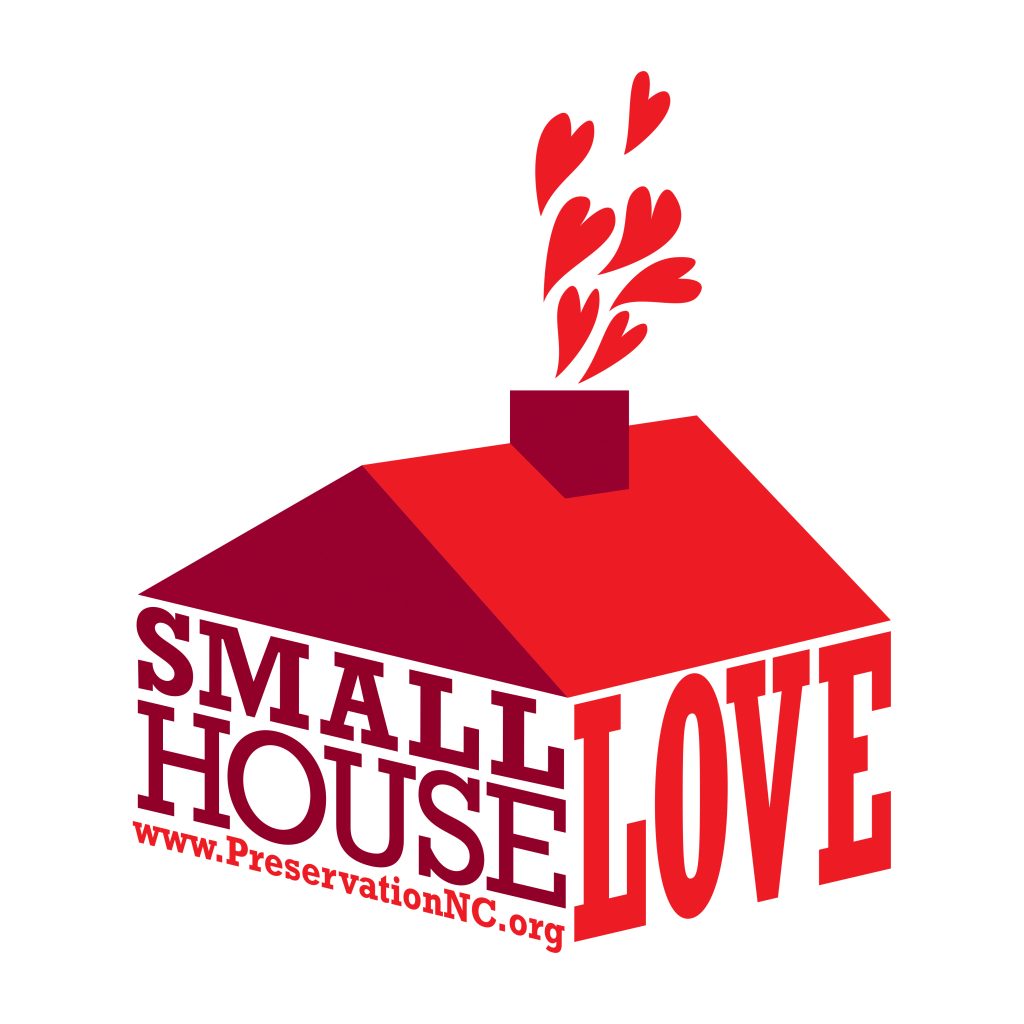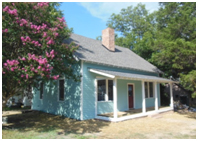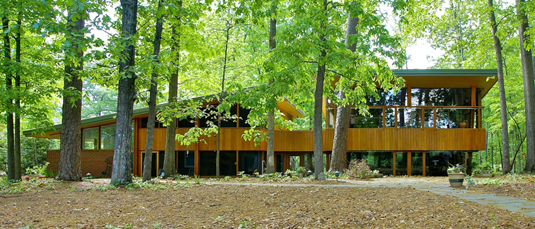Small Houses Deserve Respect, Too
Every time a small historic house in my neighborhood goes on the market, I dread the outcome. Will it remain a small house or will it get super-sized, usually with ungainly results?
 We’ve watched small houses in Raleigh get scraped away, blown up in size, or overwhelmed by new additions. Contractors race to beat out homeowners to buy them for their speculative value.
We’ve watched small houses in Raleigh get scraped away, blown up in size, or overwhelmed by new additions. Contractors race to beat out homeowners to buy them for their speculative value.
People respond with a sigh: well, it was just a small house.
We need to be preserving small houses, too – as small houses.
Household sizes have been plummeting in the United States for decades. The average American household has 2.5 persons. In 1970, only 17 percent of the U.S. population was living alone. By 2012, the proportion of single-person households increased to 27.4 percent. The share of households that are married couples with children has halved since 1970, from 40 percent to 20 percent.
According to the US Census:
• Households and families have gotten smaller over time.
• Married households tend to be older and make up a smaller share of all households.
• Living alone has become more widespread at both ends of the age spectrum.
Households consisting of either single persons or married couples without children now exceed 56%. The fastest category of households in America is singles, and by 2030, single-person households will be in the majority.
In the real estate market, single professional females are the largest demographic of property purchasers. They average two children per household. Baby boomers, often looking to downsize, constitute the second largest group of buyers.
So if households are getting smaller, shouldn’t we be focused on retaining the small historic housing that attracts this fast-growing demographic?
House size is perhaps the biggest determinant of affordability. A small house costs less to purchase and less to maintain.
Retaining a mix of larger and smaller houses provides a broader assortment of household choices and incomes. An important index of a neighborhood’s diversity is the range of its home values. In many older neighborhoods, the span between the least expensive and the most expensive homes may be as much as 1000%, meaning that people of different income levels live compatibly together. That range is lost when the small houses become large houses through major additions.
Historically, duplexes were common in our early 20th century neighborhoods, often occupied by different generations of the same family. These duplexes would be perfect alternatives for the small households of the future. In Raleigh, many duplexes have been torn down and replaced with larger single-family houses, at a time when the city is worried about the availability of affordable housing.
Another small-house type that we are quickly losing is the Mid-Century Modern (MCM) house. Often MCM houses are small and on large lots, making them ideal candidates for teardowns. Two large new houses can be built on a subdivided lot, replacing the small 1950s or 1960s home.
Some suggestions for how to preserve small historic houses:
• Make sure that older neighborhoods and MCM subdivisions are designated as either local historic districts (where there’s demolition control and design review) or neighborhood conservation overlay districts (where the height, setbacks, and size of new construction is controlled).
• Get ahead of the issue by locally designating important small houses, especially bungalows and MCM structures.
• Protect properties with preservation easements or covenants that limit the expansion of existing houses.
• Make sure that elected officials, planning and historic commissions, and developers know that we value our small homes as an asset to be retained. (Developers can make their money by renovating, but not expanding, the existing houses or by going elsewhere in the community. )
Without protection, our state’s small houses will remain perpetually vulnerable. 
Over the last two decades, PNC has been able to help preserve a number of small houses that might otherwise have been destroyed or expanded beyond recognition.
In the mill villages of Edenton and Glencoe, PNC’s covenants limit the expansion of the mill houses. In Glencoe, additions may not exceed the greater of 400 square feet or 55% of the home’s size as of 1999, the date of the declaration of covenants. The modest percentage of growth has allowed the addition of a master bedroom suite or den, ensuring their livability while retaining the small size of the house. The small size of mill houses is part of their historical integrity.
The 1949 Henry Kamphoefner House in Raleigh, an important Mid-Century Modern house associated with NC State’s College of Design, has been under a PNC easement since 1996. PNC worked with new buyers to design a compatible modern wing on the house without destroying its integrity. Meanwhile, small nearby homes have been demolished and replaced with towering new houses. In addition to PNC’s easement, the Kamphoefner House is multiply designated; it’s on the National Register of Historic Places (no real protection, but a testament to its significance) and a Raleigh Historic Landmark (providing additional protection).
This winter Nick and Julia Fountain placed a preservation easement on the nearby Fadum House, another MCM landmark with NCSU associations. Through their stewardship, the Fountains have assured that this landmark will survive as a small house with a modest addition. It is also multiply designated.
Small houses can be a tremendous benefit to our communities as we welcome the smaller households of the future. Once again, preservation can lead the way into the future by recognizing an unsung asset and trumpeting its value.
This article was written by Myrick Howard, President of Preservation NC, and originally appeared in the Spring issue of NC Preservation.


